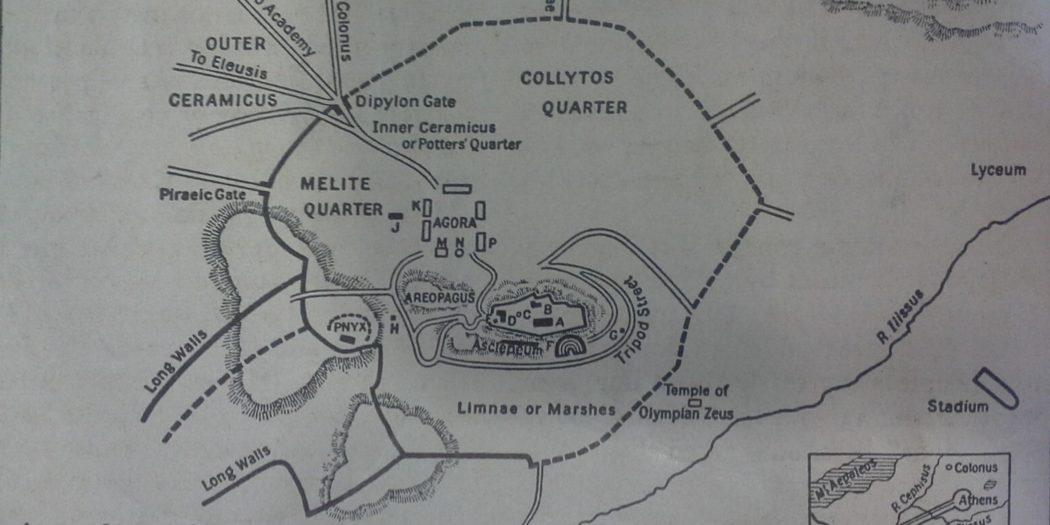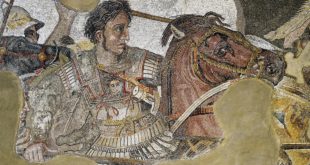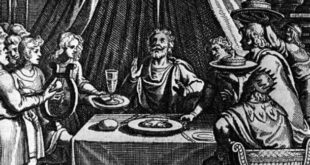A tyrant’s first problem was to seize power. Peisistratus had to solve this problem three times. In 560 he came before a meeting of the Assembly wounded and bleeding, alleging that his political opponents had attacked him. Sympathisers voted him a body-guard, with the aid of which he was able to seize power, but his opponents soon forced him to take flight. His next descent on the city was made in a chariot, in which he was accompanied by a handsome woman dressed up as Athena. He alleged that his companion was in fact Athena and that she had chosen him to rule her city. No doubt this escapade, if it really took place, impressed the simpler supporters of Peisistratus and amused the wiser ones. Anyway he again established himself as tyrant and after another short spell of power was again thrown out.
This time he stayed away ten years. When he returned for the third time, in 546, he made a less spectacular entry than on previous occasions, but remained to rule until his death in 527. During that period his talent for display found a more useful outlet. He organised the annual spring festival of Dionysus, at which the great tragic dramas of the following century were performed and the Panathenaea, a festival in honour of Athena, which included the recitation of poetry as well as athletics and drew competitors from all over Greece. He saw to it that Athens had buildings and sculptures worthy of her guests.
We have become so accustomed to thinking of Athens as the most splendid city in Greece that it is hard to realise how insignificant she was before about the year 600. Solon having prepared the way, Peisistratus put Athens on the map, not only by skillful showmanship but also by looking ahead. He sent Athenians to establish themselves in Thrace, where he had silver mines and beside the Hellespont, where they would be able to ensure the safe passage of corn ships from the Black Sea. (Athens could not live without imported corn.) Nor was farming at home forgotten. The land of exiled nobles was divided among landless citizens and money was lent to help them make a start — not on corn growing, however, but on the cultivation of the much more profitable olive tree.
Tyranny at Athens continued to be mild and beneficial even after the death of Peisistratus. His two sons, Hippias and Hipparchus, succeeded him and surprisingly, did not quarrel. Two nobles, however, Harmodius and Aristogeiton, quarrelled with the tyrant brothers and decided to murder them. They made the attempt during the Panathenaea festival, since that was one of the few times when they could carry arms without exciting suspicion. (This shows how peaceful life at Athens had become.) Hipparchus was killed, but Hippias escaped. Of the two murderers, Harmodius was cut down by the guards on the spot and Aristogeiton died later under torture. Hippias now ruled alone, but at this point we can speak of him as a tyrant in the modern sense. He was very frightened and therefore very cruel. With the help of the Spartans, the Athenians deposed him. He took refuge with Darius, King of Persia and we shall hear of him again.
Why should the Spartans with their harsh, strict form of government, have been interested in freeing Athens from a tyrant? The answer is that the Spartans did not like tyrants. Tyrants were ambitious, which meant that they might build up their city-states into powerful rivals of Sparta. Tyrants often sided with the poor against the rich, whereas the whole Spartan system was aimed at keeping the poor Helots down. Sparta therefore preferred her neighbours to have governments similar to her own aristocracy. She hoped that Hippias would be replaced by a group of nobles who would put the clock back a hundred years and rule Athens again as she had been ruled before the time of Solon, but this was not what happened. On the contrary, in the year 508, under the leadership of a noble called Cleisthenes, Athens was transformed into the democracy which was to astonish the world and in the process Harmodius and Aristogeiton were transformed in people’s minds from a pair of bloodthirsty, squabbling nobles into two unselfish heroes who had shed their blood for freedom.
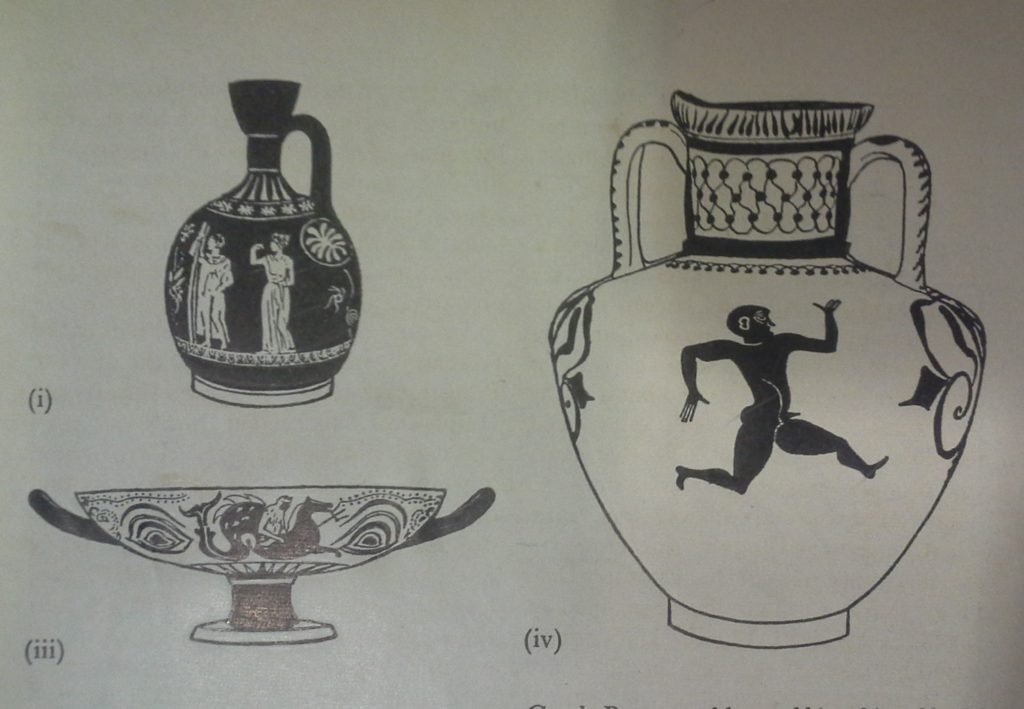
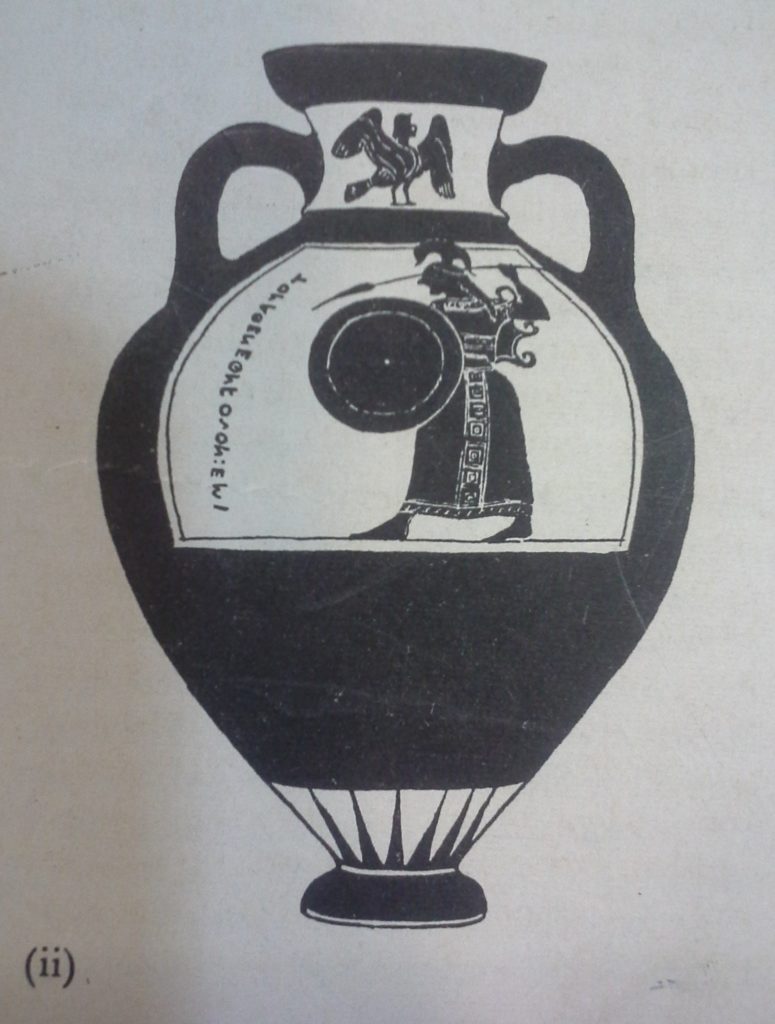
Attic potters used a reddish clay. In the 6th century B.C., they painted black figures on it (ii). Later they blackened the vase leaving the figures and ornamentation red (i).
